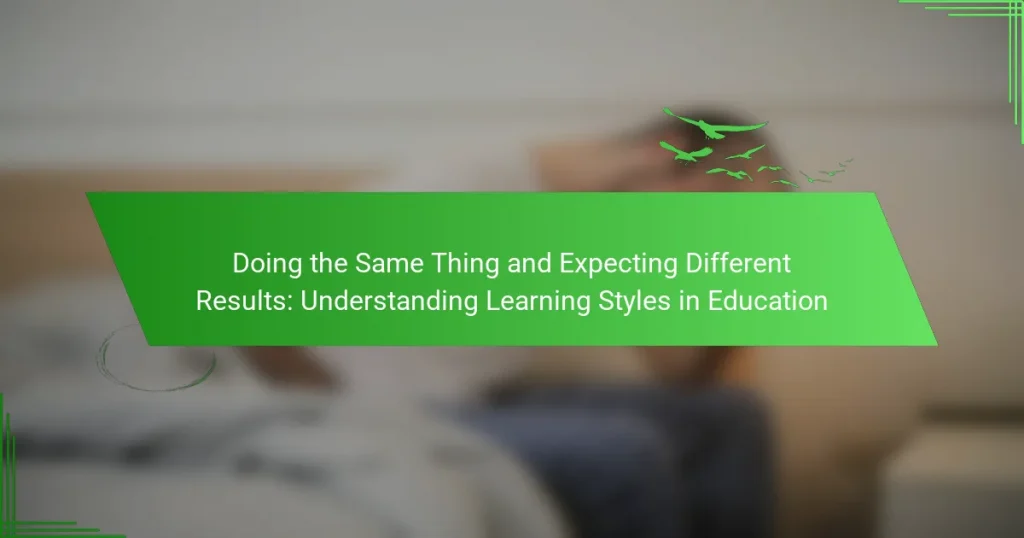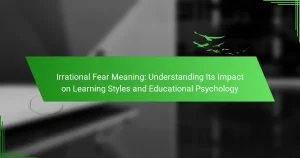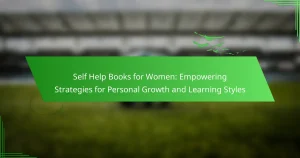Understanding learning styles is crucial for enhancing educational outcomes. This article explores distinct learning styles, including visual, auditory, and kinesthetic preferences. It examines universal attributes that influence engagement and retention. Additionally, it emphasizes the importance of adaptability and emotional intelligence in teaching methods to meet diverse learner needs.

What are the key principles of learning styles in education?
Understanding learning styles involves recognizing that individuals learn differently based on their preferences. Key principles include the identification of distinct learning styles, such as visual, auditory, and kinesthetic. Each style has unique attributes, such as preferred methods of information intake and retention strategies. For example, visual learners benefit from diagrams, while auditory learners excel with discussions. Adapting teaching methods to these styles can enhance engagement and retention, resulting in improved educational outcomes. Emphasizing these principles allows educators to tailor their approaches, ultimately fostering a more effective learning environment.
How do learning styles influence student engagement?
Learning styles significantly influence student engagement by tailoring educational approaches to individual preferences. When educators recognize and adapt to diverse learning styles, they enhance motivation and retention. For example, visual learners benefit from diagrams, while auditory learners thrive with discussions. Engaging students through their preferred learning modalities fosters a more interactive and effective learning environment. As a result, students are more likely to participate actively and achieve better academic outcomes.
What psychological theories support the concept of learning styles?
Psychological theories supporting learning styles include Gardner’s Multiple Intelligences, Kolb’s Experiential Learning Theory, and the VAK (Visual, Auditory, Kinesthetic) model. These theories emphasize that individuals learn differently based on their unique cognitive preferences. For instance, Gardner’s theory identifies distinct intelligences that influence how students engage with material. Kolb’s theory highlights the importance of experience in the learning process, suggesting that learners benefit from different stages of engagement. The VAK model categorizes learners by their sensory preferences, guiding educators to tailor their approaches for effective learning outcomes.
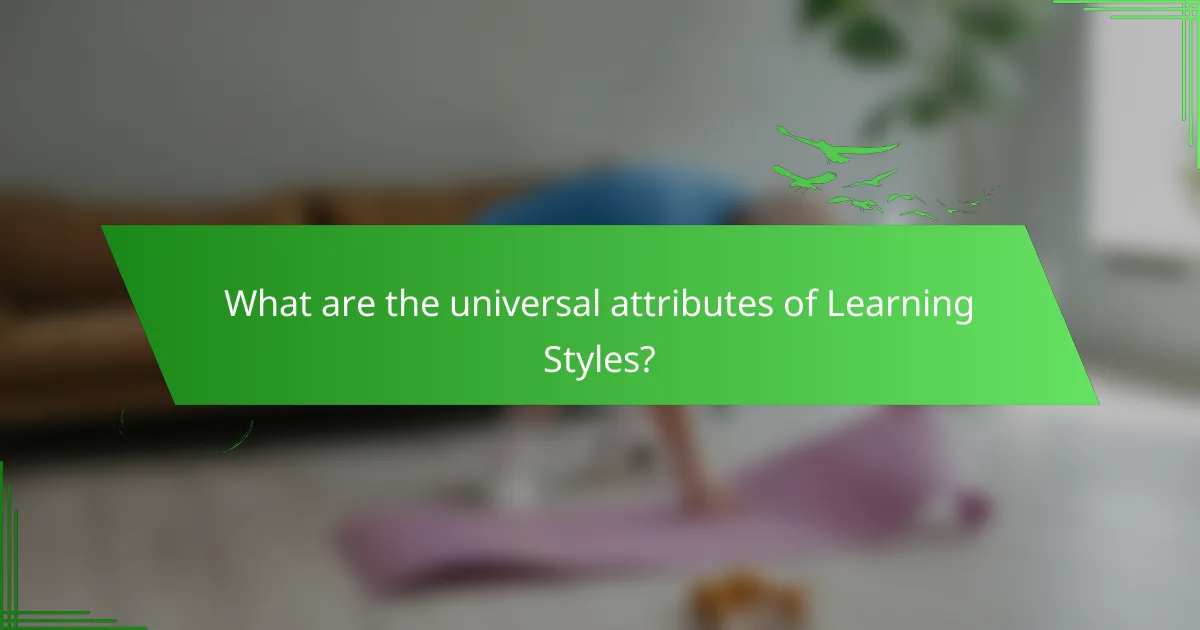
What are the universal attributes of learning styles?
Learning styles share universal attributes that enhance educational effectiveness. These attributes include sensory preferences, such as visual, auditory, and kinesthetic modalities; cognitive processes, which involve how information is processed and retained; and environmental factors, including the setting in which learning occurs. Understanding these attributes allows educators to tailor their approaches to meet diverse learner needs, ultimately improving engagement and retention.
How do visual, auditory, and kinesthetic learning styles differ?
Visual, auditory, and kinesthetic learning styles differ in how individuals absorb and process information. Visual learners prefer diagrams and charts, auditory learners excel with lectures and discussions, while kinesthetic learners thrive through hands-on activities. Each style impacts teaching methods and student engagement.
What role does cognitive load play in learning styles?
Cognitive load significantly influences learning styles by affecting information processing and retention. High cognitive load can hinder the ability to learn effectively, while optimal load enhances engagement and understanding. Strategies to manage cognitive load include breaking information into smaller chunks and using varied instructional methods. These approaches cater to different learning styles, promoting better educational outcomes.
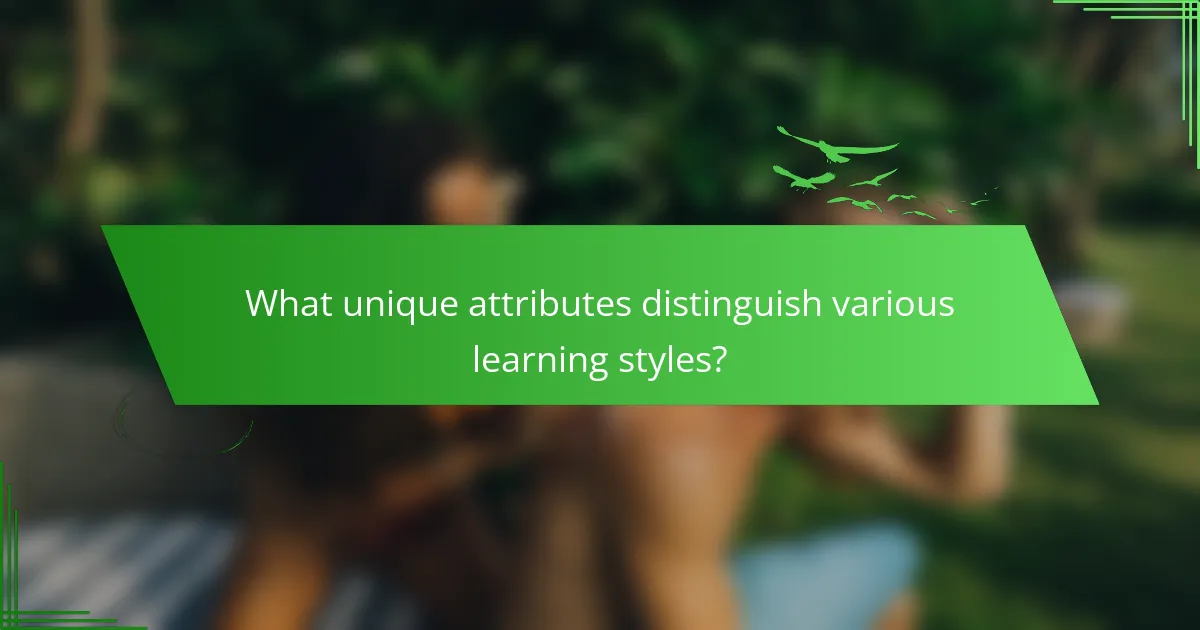
What unique attributes distinguish various learning styles?
Different learning styles are distinguished by unique attributes such as sensory preferences, information processing approaches, and interaction modes. For instance, visual learners benefit from diagrams and charts, while auditory learners excel with lectures and discussions. Kinesthetic learners thrive through hands-on activities. Understanding these attributes allows educators to tailor their teaching methods effectively.
How do cultural factors impact learning style preferences?
Cultural factors significantly influence learning style preferences by shaping how individuals perceive and engage with educational content. For example, collectivist cultures often emphasize group learning and collaboration, while individualistic cultures may prioritize independent study and self-directed learning. These preferences can affect motivation, communication, and the effectiveness of various teaching methods. Understanding these cultural nuances allows educators to tailor their approaches, enhancing the learning experience for diverse student populations.
What are the implications of adaptive learning technologies?
Adaptive learning technologies significantly enhance educational outcomes by personalizing learning experiences. They analyze individual learning styles, enabling tailored content delivery. This approach improves engagement and retention rates, addressing diverse student needs effectively. As a result, adaptive learning fosters a more inclusive educational environment, promoting success for all learners.
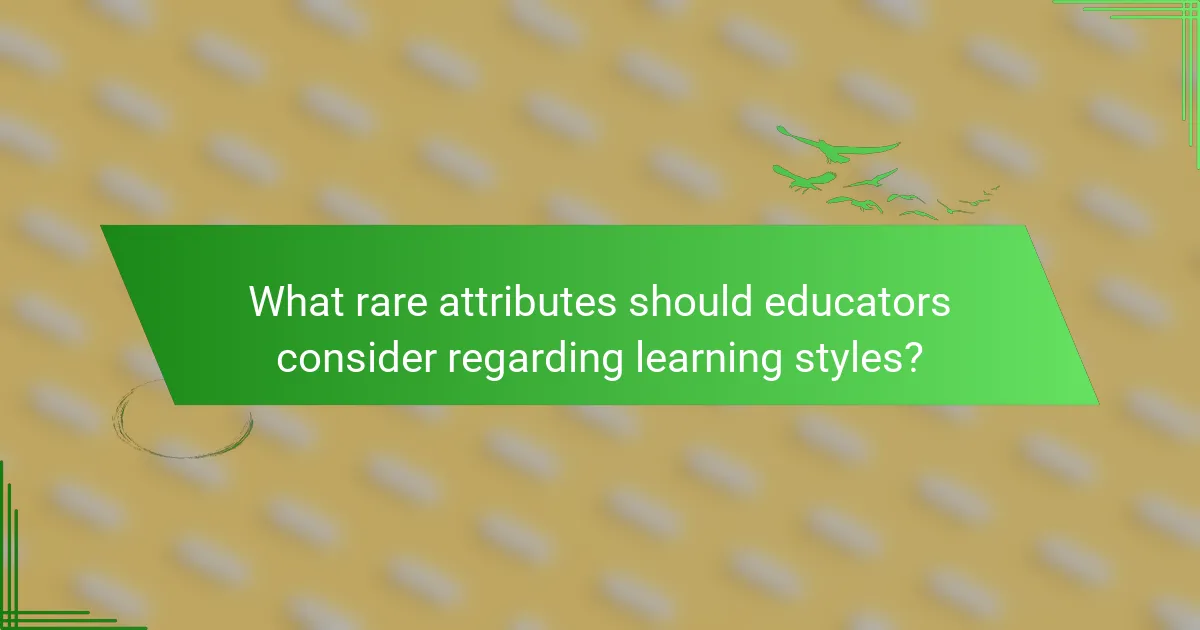
What rare attributes should educators consider regarding learning styles?
Educators should consider the rare attributes of adaptability and emotional intelligence in learning styles. Adaptability allows educators to modify teaching methods based on students’ unique responses, enhancing engagement. Emotional intelligence helps educators understand and respond to students’ emotional needs, fostering a supportive learning environment. These attributes can lead to improved educational outcomes and a more personalized learning experience.
How do emotional intelligence and learning styles intersect?
Emotional intelligence and learning styles intersect by enhancing personalized learning experiences. Emotional intelligence influences how students engage with their preferred learning styles, impacting retention and comprehension. For instance, students with high emotional intelligence may adapt their learning strategies based on their emotional responses, leading to more effective educational outcomes. Understanding this relationship can help educators tailor approaches that foster both emotional and cognitive development.
What are the effects of neurodiversity on learning styles?
Neurodiversity significantly influences learning styles by highlighting diverse cognitive processes. Individuals with conditions like ADHD or autism often display unique strengths in areas such as creativity or problem-solving. For example, visual learners may excel in spatial reasoning, while those with dyslexia might develop strong oral communication skills. Understanding these variations allows educators to tailor approaches, fostering an inclusive environment that enhances learning outcomes. Emphasizing neurodiversity in educational strategies promotes engagement and retention, ultimately benefiting all students.
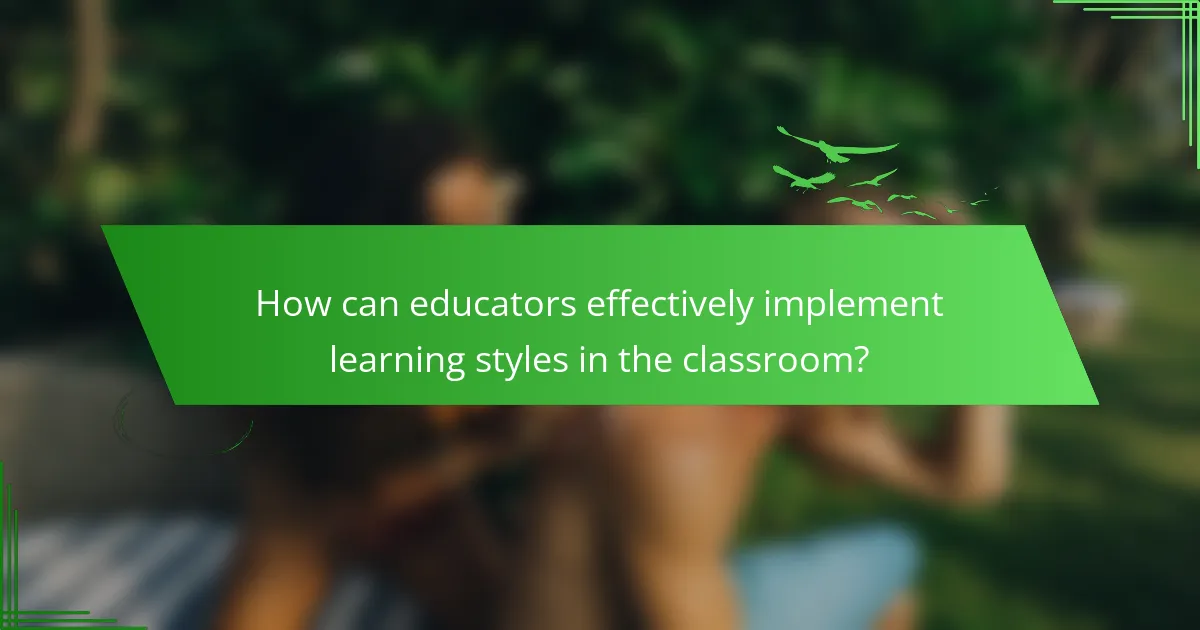
How can educators effectively implement learning styles in the classroom?
Educators can effectively implement learning styles by tailoring instruction to meet diverse student needs. Engaging multiple senses enhances retention and understanding.
1. Assess learning preferences through surveys or observations.
2. Incorporate varied teaching methods, such as visual aids, hands-on activities, and discussions.
3. Create flexible groupings that allow students to collaborate in ways that suit their styles.
4. Continuously evaluate and adjust strategies based on student feedback and performance.
What strategies can enhance the effectiveness of learning style adaptations?
To enhance the effectiveness of learning style adaptations, incorporate diverse teaching methods, assess individual preferences, and provide ongoing feedback. Engaging multiple senses fosters deeper understanding. Tailoring content to unique learner attributes increases retention and motivation. Regular evaluations ensure strategies remain effective over time.
What common mistakes do educators make regarding learning styles?
Educators often misinterpret learning styles, leading to ineffective teaching strategies. Common mistakes include overemphasizing one style, neglecting individual differences, and failing to adapt methods. These errors can hinder student engagement and learning outcomes. Recognizing that learning is multifaceted is crucial for effective education.
How can assessments be tailored to different learning styles?
Assessments can be tailored to different learning styles by incorporating varied formats and approaches. For visual learners, using diagrams and charts enhances understanding. Auditory learners benefit from discussions and verbal instructions. Kinesthetic learners thrive with hands-on activities and simulations. Adapting assessments to these styles increases engagement and retention.
What resources are available for professional development in learning styles?
Various resources for professional development in learning styles include workshops, online courses, and educational literature. Workshops often provide interactive learning experiences tailored to different styles. Online courses offer flexible learning options, covering theories and practical applications. Educational literature includes books and research papers that explore the nuances of learning styles, enhancing educators’ understanding. Additionally, peer collaboration and professional learning communities facilitate the exchange of best practices. These resources collectively support educators in adapting their teaching methods to meet diverse learner needs.
What best practices should be followed for optimizing learning outcomes?
To optimize learning outcomes, educators should adopt diverse instructional strategies tailored to different learning styles. Engaging various modalities enhances retention and understanding. Incorporating active learning techniques, such as group discussions and hands-on activities, can significantly improve engagement. Regular assessments help identify learning gaps, allowing for timely interventions. Providing constructive feedback fosters a growth mindset, encouraging students to embrace challenges and persist.
